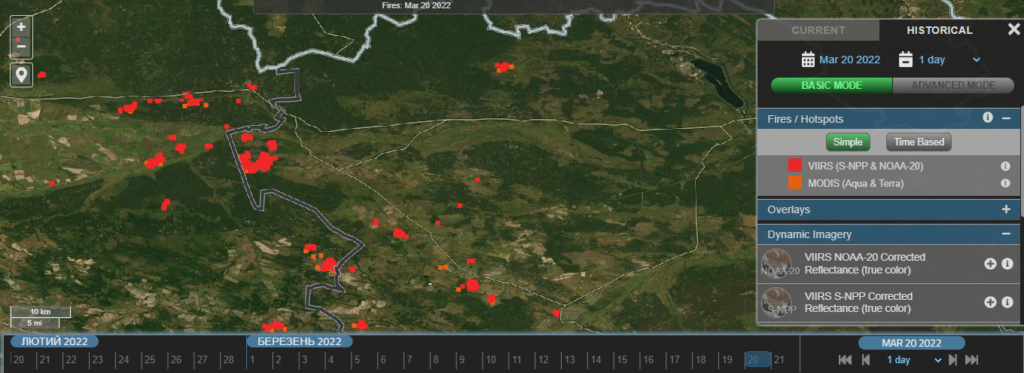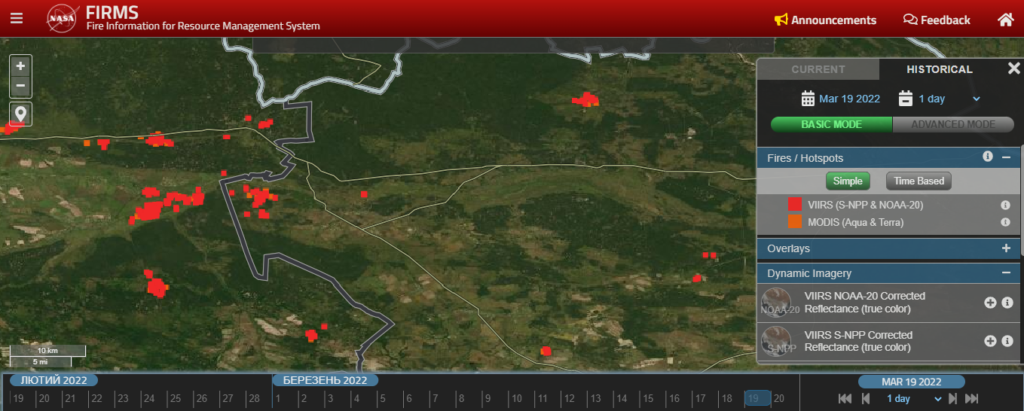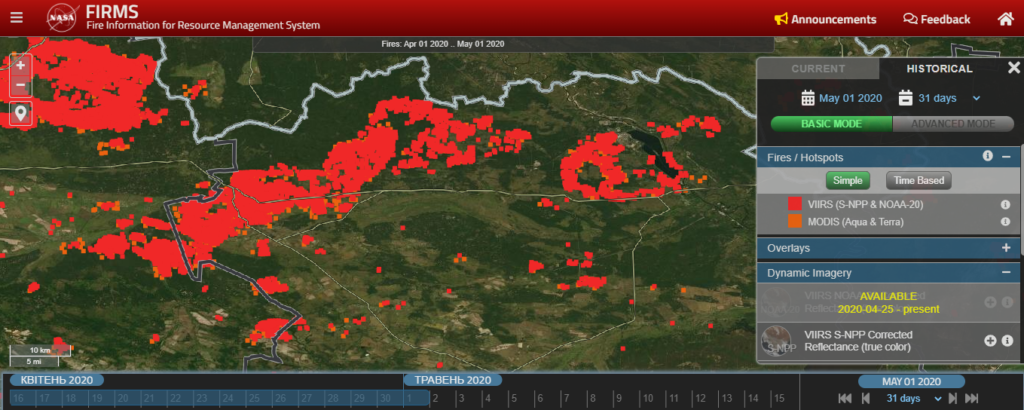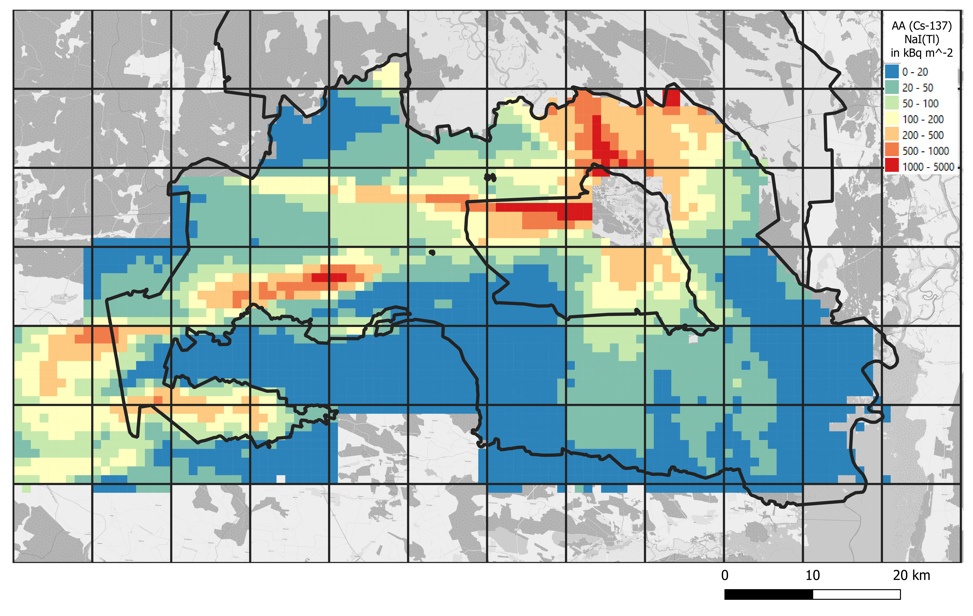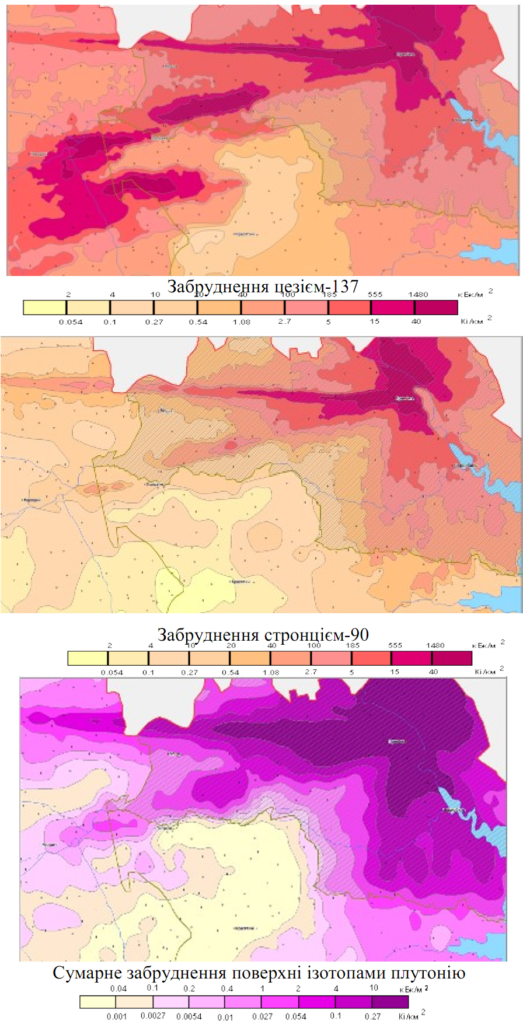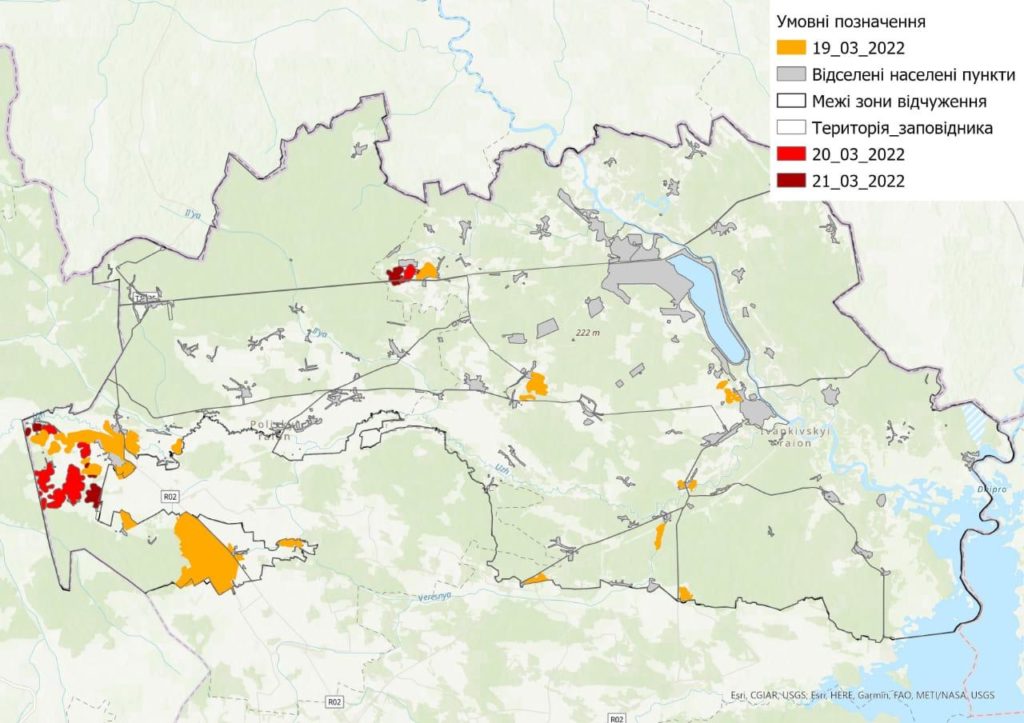Chernobyl is again the epicenter of Ukraine’s environmental threats, and like 36 years ago, when the fourth reactor of Chornobyl nuclear power plant exploded, anxious eyes from around the world are fixed on the region, as fires around Chernobyl could have unpredictable catastrophic consequences.
The Russian occupiers continue to ruthlessly destroy the nature of Ukraine. Whether they intend it or not, the Russians are provoking large-scale fires in natural ecosystems.
According to NASA FIRMS data (Fire Information for Resource Management System), on March 20, 2022, in the Chornobyl Exclusion Zone (CEZ) and adjacent territories, 2 foci of fire were recorded (№ 6, 7 in Fig. 1), as well as 5 foci (№ 1-5 in Fig. 1) – right near its western border.
Most of the recorded fire foci (№ 1-4, 6-7 in Fig. 1) were residual from the fires of March 19, 2022, while the focus № 5 was newly formed.
7
Fig. 1– Location of fires within the CEZ and its western border on March 20, 2022.
Fig. 2– Location of fires within the CEZ and its western border on March 19, 2022.
In dry and windy weather, anthropogenic activity is the main source of fires. Thus, in the case of foci 1, 2, 4, 5, outbreaks are most likely related to human activities near the surrounding housing areas. At the same time, fires directly on the territory of the CEZ are in one way or another connected with the presence of the Russian military there – these are either result of deliberate arson, or active hostilities.
Drevlyansky Nature Reserve, like the CEZ, is an area that has been contaminated with radioactive substances as a result of the Chornobyl accident. It was created specifically to protect the population from its consequences. It is worth mentioning that in 2020, mass fires in the Chornobyl Exclusion Zone began with the spread of fires from the territory of the Drevlyanskyi Nature Reserve (approximate limits are shown in white in Fig. 3 and in red in Fig. 4) and their further spread.
Given the radiological significance of the fire on the territory of the CEZ, the radiation background was monitored using the automated radiation monitoring system (ARMS) in 39 points.
As of now, information on the radiation situation related to the fire spread on the territory of the CEZ can only be an estimate and be based on available information materials.
Figure 3– Fires in the territory of the CEZ and adjacent territories in April 2020
Fig. 4– Density of contamination of the upper soil layer (0-15 cm). According to data of aerial reconnaissance of the Federal Office for Radiation Protection of Germany 2021.
Fires in areas with significant levels of radionuclide contamination (Fig. 5) and fires in the location of radioactive waste management infrastructure (10-km zone around the Chernobyl nuclear power plant) are particularly dangerous in terms of radiation risks.
Fig. 5– Characteristics of radionuclide contamination of the territory of CEZ
As of 13:00 on March 21, 2022, the fire situation in the CEZ and its western suburbs has significantly improved compared to March 20 (Fig. 6), but some fires were recorded from 00:00 on March 21, although on a much smaller scale – from 0.1 to 0.5 km2.
Fig. 6– Location of fires within the CEZ and its western border on March 20, 2022 according to NASA satellite images
Fig. 7– Fire spread within the CEZ during March 19-21, 2022.
As we can see, the fire situation within and around the CEZ remains unpredictable. A certain reduction in the area of fires on March 21 cannot be a reason for optimism, as higher temperatures are forecast for this week, which will contribute to the drying of forest floor and increase the level of fire danger.
This means that in the conditions of occupation of the exclusion zone by Russian troops, the risks of large-scale fires, which were observed in 2020, will unfortunately increase and the unique nature that has begun to recover in this area can be destroyed.
Fires in the areas contaminated with radionuclides are a kind of mine with unpredictable deadly effects, as they again make this area deadly in terms of radiation pollution and because of these risks the whole world must sound the alarm and literally shout about the need for strengthened environmental security in this region.

